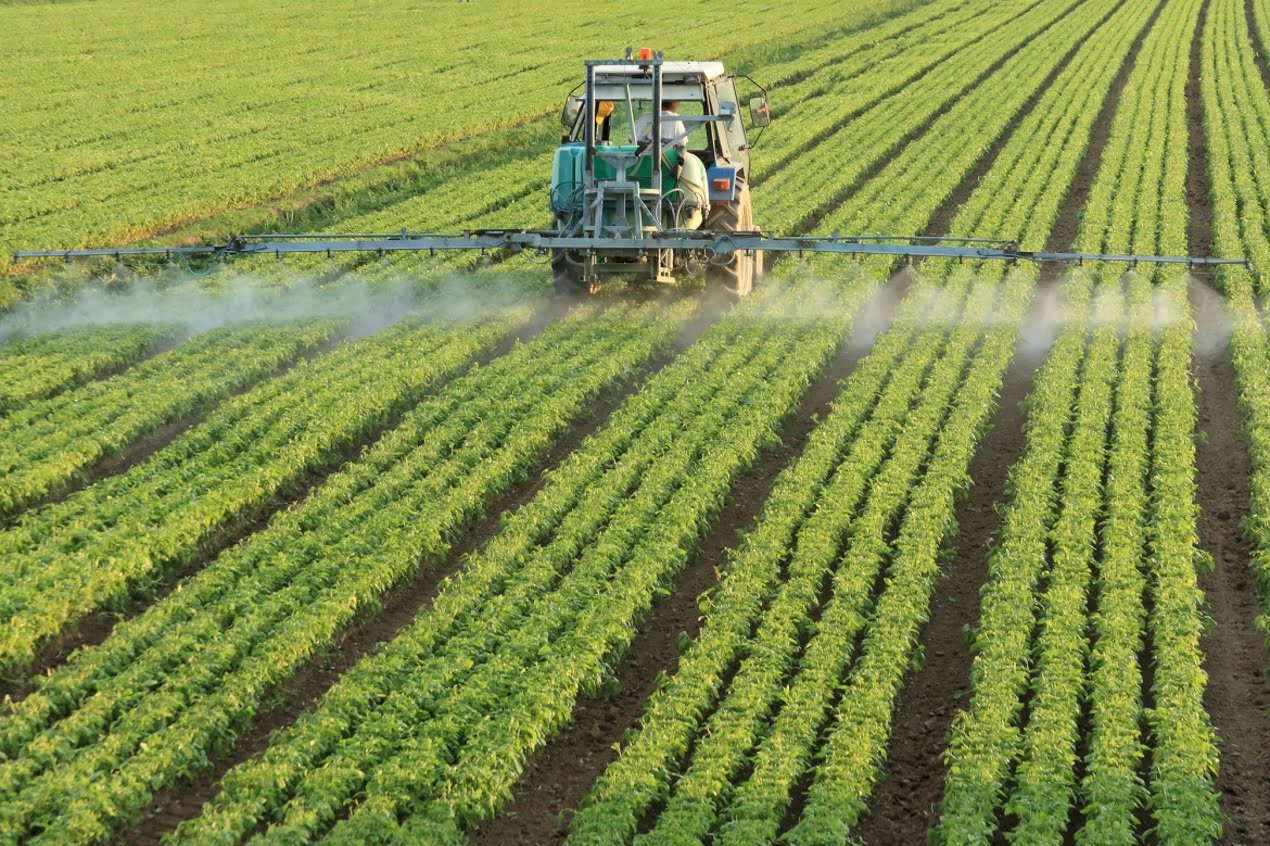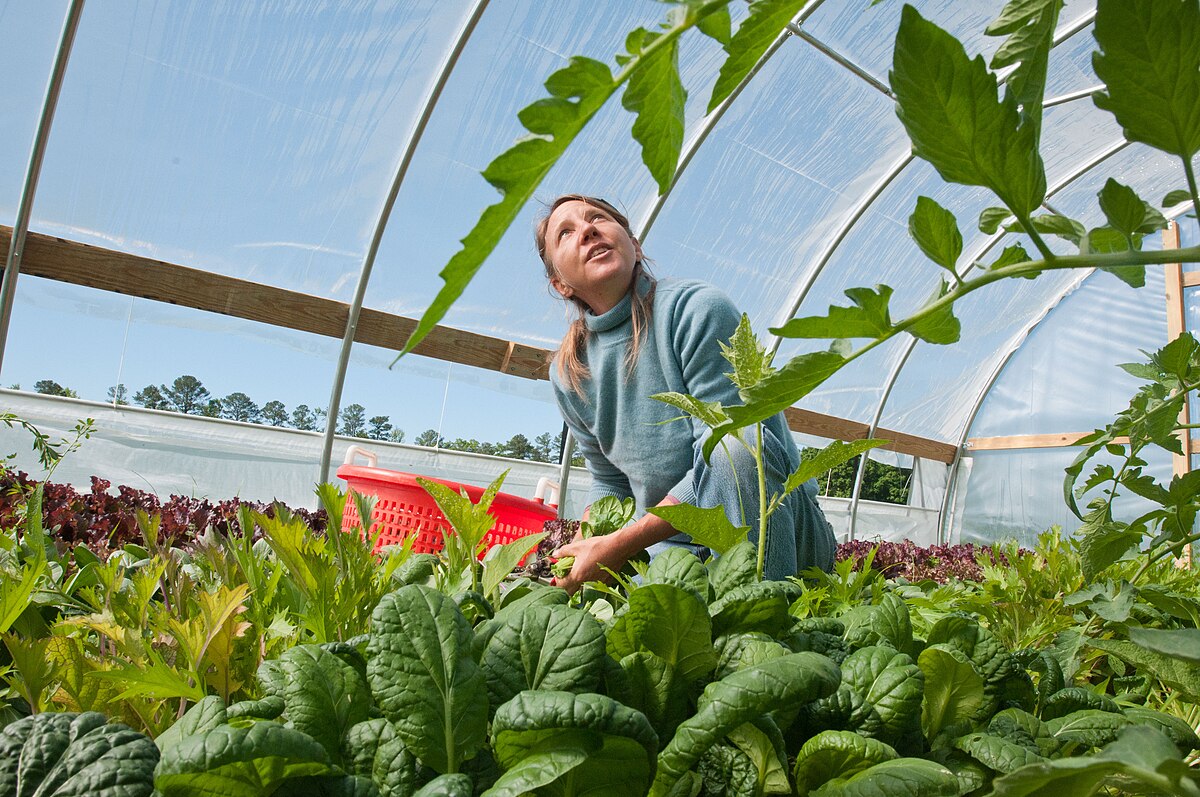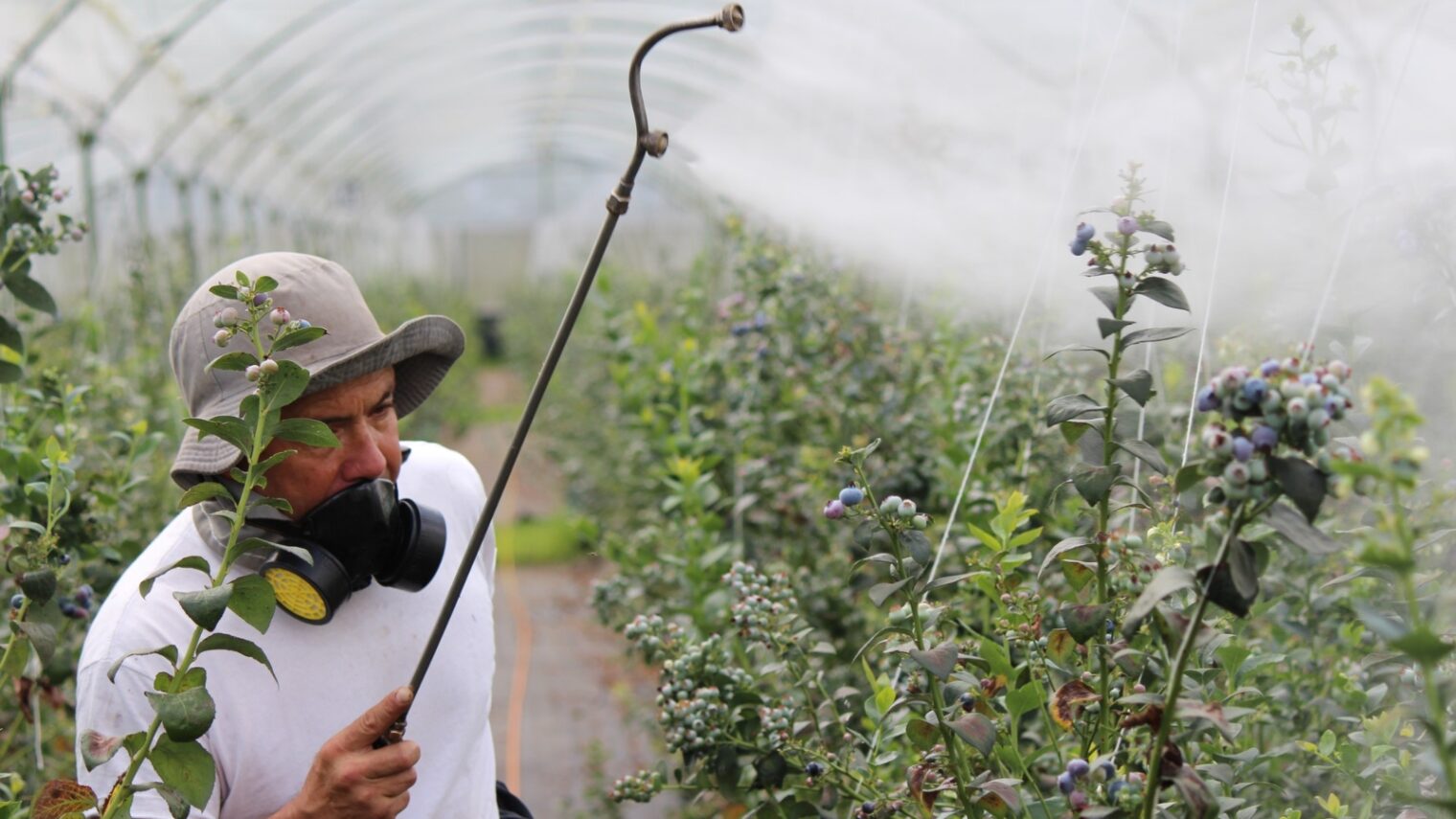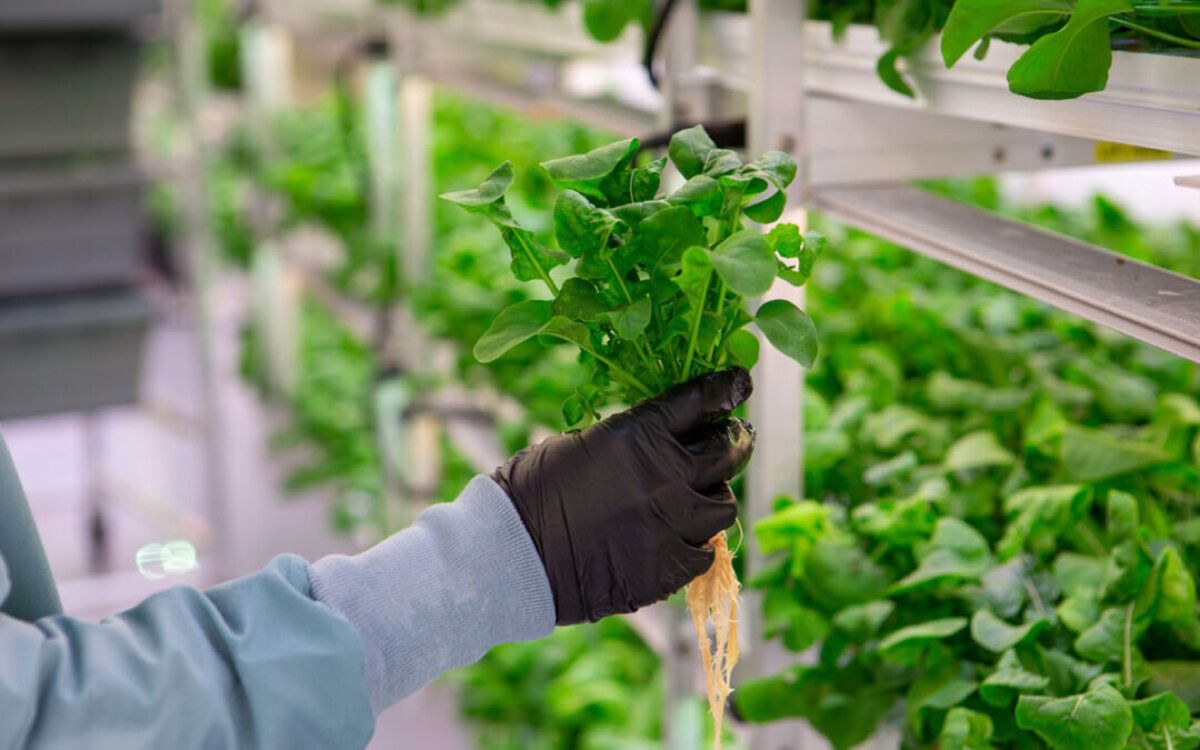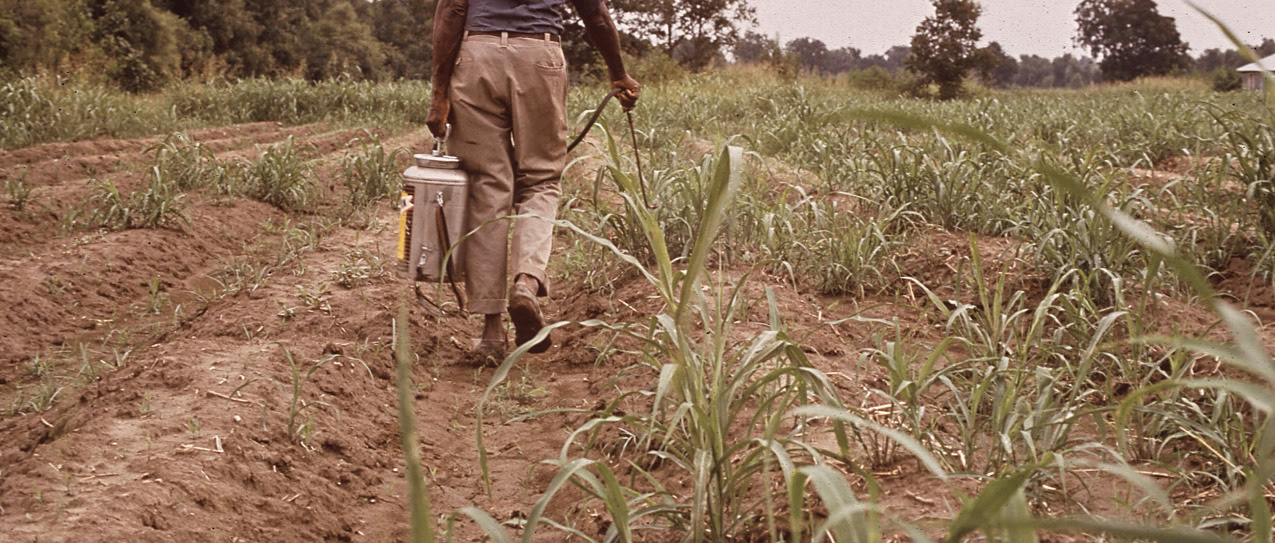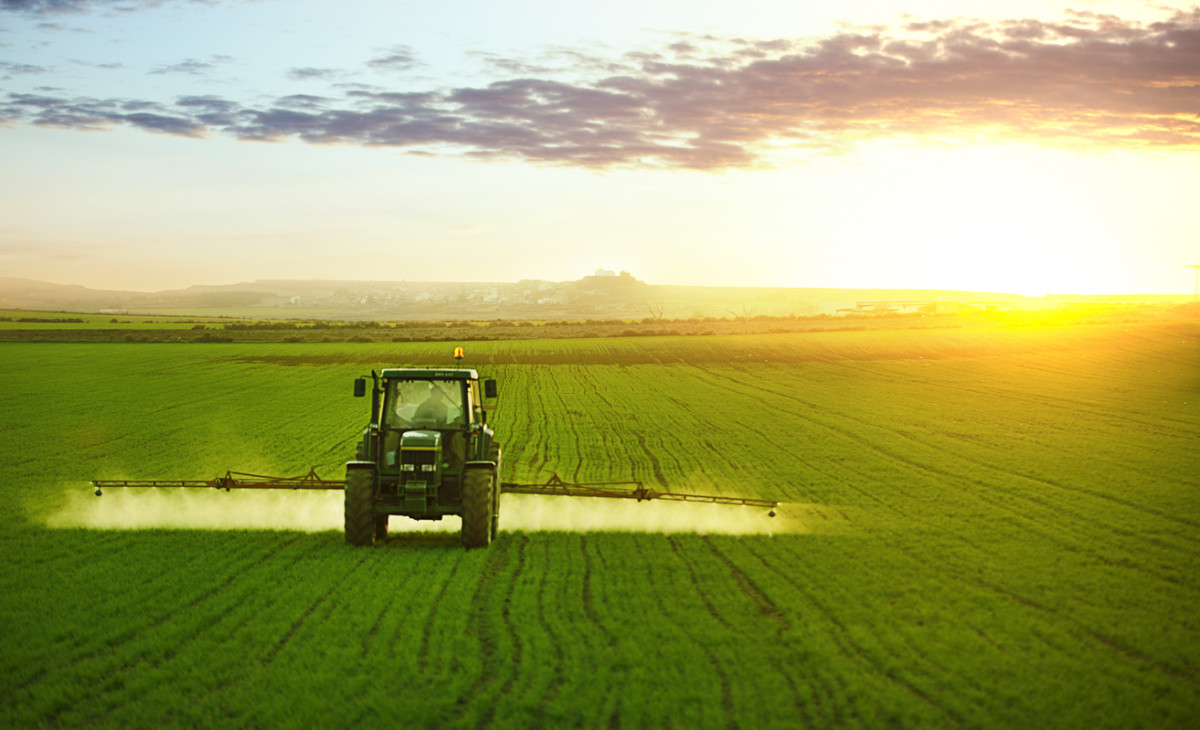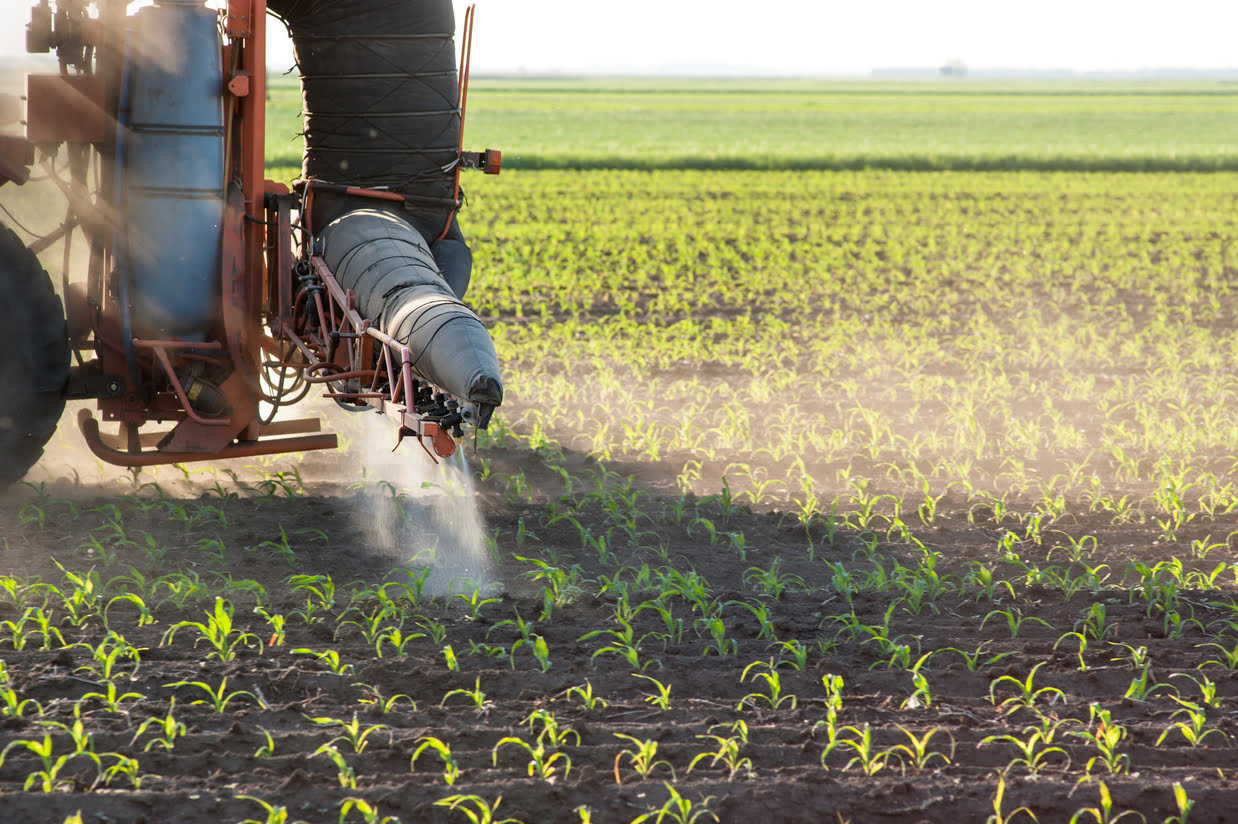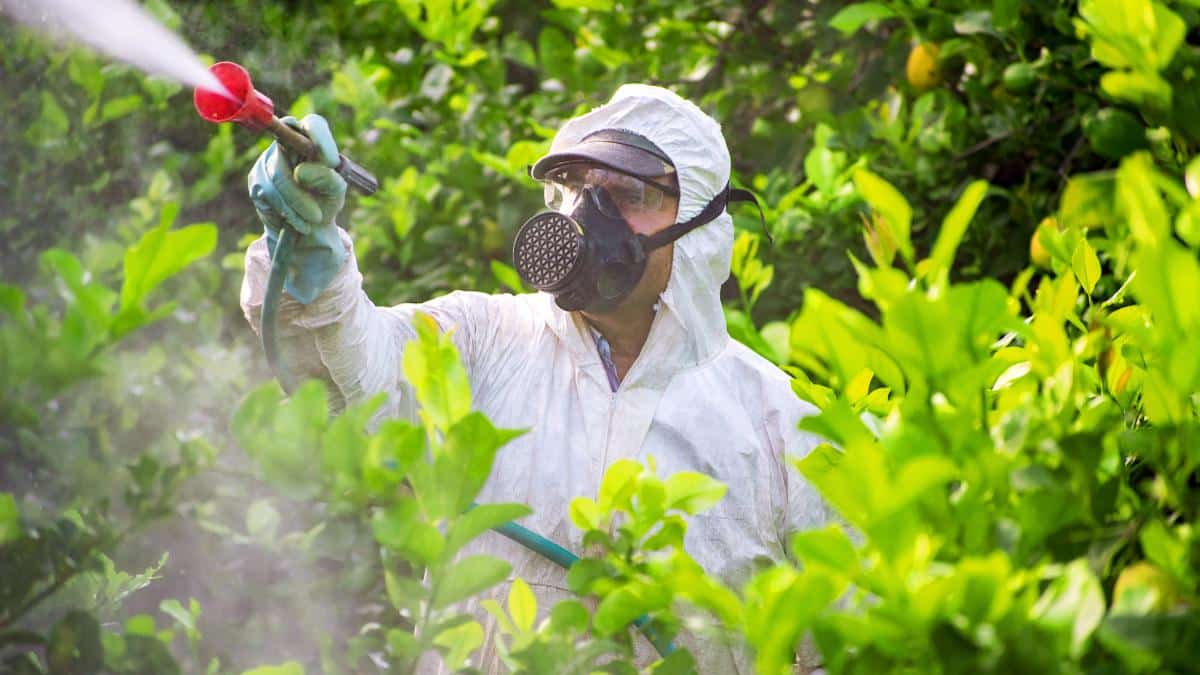Home>Gardening News and Trends>Latest News>Why Are Farmers And Scientists Choosing To Use Owls Instead Of Pesticides?
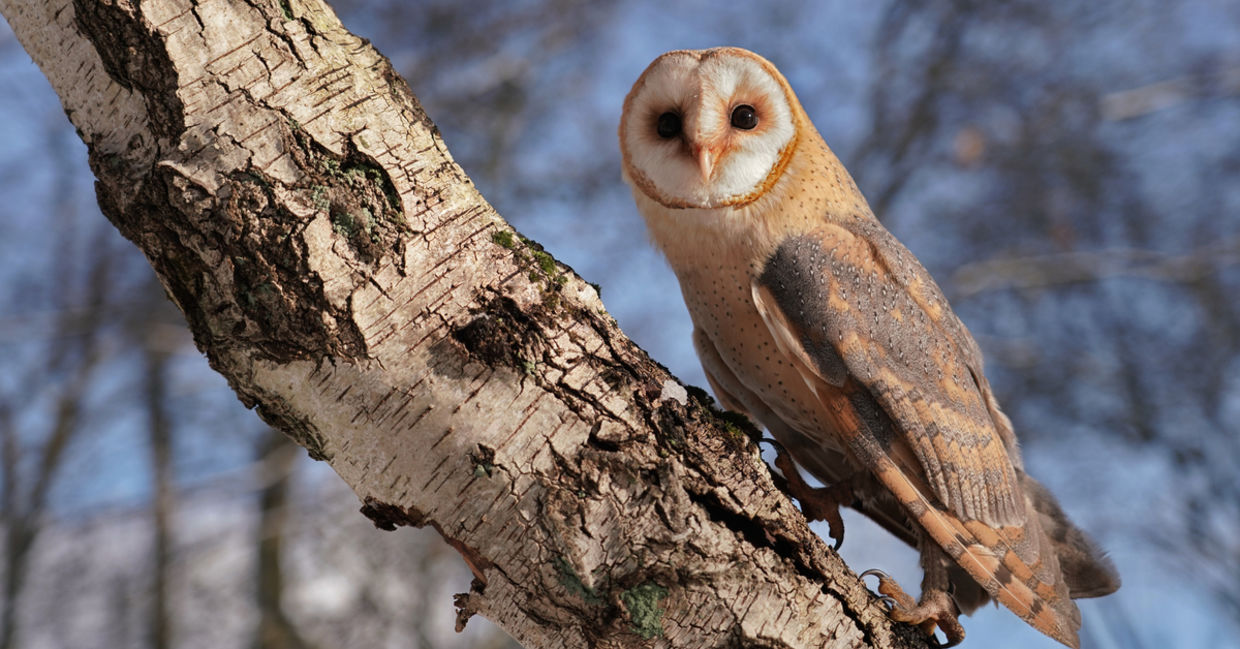

Latest News
Why Are Farmers And Scientists Choosing To Use Owls Instead Of Pesticides?
Published: November 27, 2023
Discover the latest news on farmers and scientists in this area choosing to use owls instead of pesticides. Learn the reasons behind this eco-friendly approach and its benefits.
(Many of the links in this article redirect to a specific reviewed product. Your purchase of these products through affiliate links helps to generate commission for Chicagolandgardening.com, at no extra cost. Learn more)
Table of Contents
- Introduction
- The Harmful Effects of Pesticides
- Owls as Natural Pest Control
- The Role of Farmers and Scientists in Implementing Owl-based Pest Control
- Benefits of Using Owls Instead of Pesticides
- Challenges and Limitations of Owl-based Pest Control
- Success Stories of Farmers and Scientists Using Owls
- Conclusion
Introduction
As concerns over the harmful effects of pesticides continue to grow, farmers and scientists are actively seeking sustainable alternatives to protect crops and promote a healthy environment. One innovative approach that is gaining popularity is the use of owls as natural pest control agents. Instead of relying on toxic chemicals, farmers in certain areas are turning to these birds of prey to keep pests at bay.
The harmful effects of pesticides on the environment and human health have been widely documented. These chemicals disrupt ecosystems, pollute water sources, and pose risks to farmers and consumers. Additionally, pests can develop resistance to pesticides over time, requiring higher doses or stronger chemicals to achieve the desired effect. This vicious cycle can be detrimental to both the environment and agricultural productivity.
Owls, with their exceptional hunting skills and keen senses, offer an eco-friendly solution to pest control. These nocturnal predators have evolved to be efficient hunters, specializing in targeting small mammals, insects, and rodents. By introducing owls into agricultural landscapes, farmers can harness their natural hunting instincts and reduce crop damage caused by pests.
The implementation of owl-based pest control involves strategic placement of nesting boxes or perches throughout farm fields or orchards. These structures provide suitable habitats for owls, attracting them to the area. Once established, the owls can regulate the pest populations naturally, preying on species that would otherwise cause damage to crops.
While the concept of using owls as pest control may seem unconventional, it has been embraced by farmers and scientists alike. Their efforts to replace traditional pesticide methods with this sustainable approach are yielding promising results. In this article, we will explore the role of farmers and scientists in implementing owl-based pest control, the benefits it brings, and the challenges that come with it.
The Harmful Effects of Pesticides
Pesticides have long been used as a conventional method for controlling pests and protecting crops. However, the widespread use of these chemicals has raised concerns about their detrimental effects on the environment and human health.
One of the most significant concerns regarding pesticides is their impact on biodiversity. These chemicals can have unintended consequences, harming not only the targeted pests but also beneficial insects, birds, and other wildlife. The loss of biodiversity can disrupt ecosystems and have long-term consequences for the balance of nature.
Furthermore, pesticides can contaminate soil, water sources, and the air. They can leach into groundwater, which can then be consumed by humans and animals, posing a health risk. The accumulation of pesticide residues in the environment can also have detrimental effects on non-target organisms, including plants and aquatic life.
Exposure to pesticides has been linked to various human health problems, including respiratory issues, neurological disorders, and even certain types of cancer. Prolonged exposure can have chronic effects, especially for those who work directly with pesticides in agricultural settings. Children and pregnant women are particularly vulnerable to the harmful effects of these chemicals.
Another concern is the development of pesticide resistance. Pests have the ability to adapt and become resistant to the chemicals used against them. This means that higher concentrations of pesticides or different chemicals need to be used to achieve the same level of control, leading to a continuous cycle of chemical use that further contributes to environmental and health risks.
Given these harmful effects, farmers and scientists are actively exploring alternative pest control methods that are less damaging to the environment and human health. The use of owls as natural pest controllers is one such sustainable approach that shows promise in reducing reliance on chemical pesticides.
Owls as Natural Pest Control
Owls have long been celebrated for their ability to hunt and prey upon small mammals, insects, and rodents. These magnificent birds of prey have evolved with incredible hunting skills, including acute vision, exceptional hearing, and silent flight. These adaptations make them highly effective natural pest control agents.
By introducing owls into agricultural landscapes, farmers can tap into the natural predation instincts of these avian hunters. Placing nesting boxes or perches throughout farm fields or orchards provides suitable habitats for owls, attracting them to the area. Once established, the owls become an integral part of the ecosystem, regulating pest populations through predation.
Owls are known for their diverse diet, which often includes pests that are detrimental to crops. For instance, barn owls are voracious predators of rodents such as mice and rats, which can cause significant damage to crops. By preying on these pests, owls offer an effective and sustainable solution for pest control.
Additionally, owls are skilled predators of insects and small mammals. Many owl species feed on insects like moths, beetles, and grasshoppers, which can ravage crops if left unchecked. When it comes to small mammals like voles and gophers, owls play a crucial role in keeping their populations in check, preventing them from causing widespread damage to agricultural fields.
One unique characteristic of owls is their ability to hunt at night. Many pests, such as nocturnal rodents and insects, are most active during the night. Owls, with their exceptional vision and hearing, excel at capturing prey in the low-light conditions, allowing them to target pests precisely when they are most vulnerable.
The effectiveness of owls as pest control agents extends beyond their hunting abilities. The mere presence of owls in an area can deter pests from causing damage. Pests are naturally wary of predators, and the presence of owls can create a natural deterrent that keeps pests at bay.
Moreover, using owls as natural pest control reduces the reliance on chemical pesticides. This shift towards more sustainable pest control methods minimizes the environmental impact of agriculture and promotes ecosystem health. With their natural hunting instincts and adaptive abilities, owls contribute to a more balanced and resilient agricultural system.
The Role of Farmers and Scientists in Implementing Owl-based Pest Control
The implementation of owl-based pest control requires collaboration and cooperation between farmers and scientists. Both parties play crucial roles in adopting and expanding the use of this sustainable pest control method.
Farmers are at the forefront of implementing owl-based pest control on their farms. They recognize the need for alternative pest management strategies that reduce the reliance on chemical pesticides. By embracing the use of owls, farmers can create a more balanced and eco-friendly approach to protecting their crops.
For farmers, the first step in implementing owl-based pest control involves providing suitable habitats for the birds. This can be accomplished by strategically placing nesting boxes or perches throughout their agricultural land. Farmers also need to manage the surrounding environment to provide an ideal hunting ground for the owls, ensuring that there is ample prey available.
An important aspect of the farmer’s role is monitoring and maintaining the owl habitats. This includes regular inspections of nesting boxes, ensuring they are in good condition and positioned correctly. Farmers may collaborate with local wildlife organizations or owl experts to receive guidance on best practices for maintaining owl populations.
Scientists and researchers play a vital role in providing knowledge and guidance to farmers in implementing owl-based pest control. They conduct scientific studies to understand the ecological interactions between owls, pests, and crops. This research helps identify the most effective strategies for maximizing the benefits of owl-based pest control.
Scientists also provide expertise in owl behavior, nesting requirements, and habitat conservation. They can assist farmers in determining the optimal placement of nesting boxes or perches to attract owls to the desired areas. Scientists can also help farmers monitor the impact of owl-based pest control on pest populations and crop damage, providing valuable data for further refinement of the approach.
Additionally, scientists work on raising awareness about the benefits and advantages of owl-based pest control among farmers and the wider agricultural community. They collaborate with agricultural extension services and organizations to disseminate information and educate farmers on the benefits, implementation techniques, and potential challenges associated with owl-based pest control.
The collaborative efforts of farmers and scientists are essential for the successful implementation and expansion of owl-based pest control. By working together, they can overcome challenges and develop strategies to effectively integrate owls into agricultural landscapes, promoting sustainable pest management practices and fostering a healthier environment for both crops and wildlife.
Benefits of Using Owls Instead of Pesticides
The use of owls as natural pest control agents offers a range of benefits over traditional pesticides. Here are some of the key advantages of using owls for pest management:
- Environmental Protection: Owl-based pest control significantly reduces the use of chemical pesticides, minimizing harm to the environment. By implementing this sustainable approach, farmers can protect biodiversity, preserve ecosystems, and prevent pollution of soil and water sources.
- Health and Safety: Using owls reduces the health risks associated with pesticide exposure, both for farmers and consumers. By eliminating or minimizing the use of toxic chemicals, owl-based pest control promotes a safer working environment for farmers and reduces the potential risks to human health.
- Sustainable Agriculture: By harnessing natural predation, owl-based pest control promotes sustainable agricultural practices. Farmers can reduce their reliance on costly and potentially harmful pesticides, leading to more environmentally friendly farming methods. This approach aligns with the principles of organic farming and supports the long-term productivity and viability of agricultural systems.
- Cost-Effective: While the initial investment in owl habitat creation (such as nesting boxes) may be required, in the long run, using owls for pest control can be cost-effective. Farmers can save on the recurring costs associated with purchasing pesticides and reduce dependency on external chemical inputs.
- Efficiency and Effectiveness: Owls are highly efficient predators with natural hunting instincts. They can quickly adapt to changing pest populations and effectively regulate their numbers. Unlike pesticides, which can become less effective over time due to pest resistance, owls maintain their effectiveness in controlling pests.
- Natural Deterrent: The presence of owls in the agricultural landscape acts as a natural deterrent to pests. The fear and avoidance behavior of pests towards predators like owls can help minimize crop damage without the need for chemical intervention.
The benefits of using owls instead of pesticides extend beyond crop protection. Owls contribute to a more balanced ecosystem, promoting natural predator-prey dynamics. By supporting owl populations, farmers create habitats that benefit not only the owls but also other wildlife species that depend on the same ecological resources.
Overall, using owls as natural pest control agents offers a sustainable and effective alternative to chemical pesticides. It provides numerous benefits to farmers, consumers, and the environment, leading to a healthier and more resilient agricultural system.
Challenges and Limitations of Owl-based Pest Control
While using owls as natural pest control agents offers many advantages, there are also challenges and limitations to consider. Here are some of the key challenges associated with owl-based pest control:
- Dependence on Owl Populations: Owl-based pest control relies on a healthy and stable population of owls in the surrounding area. Factors such as habitat loss, food scarcity, and climate change can affect owl populations, making it challenging to maintain a consistent level of pest control.
- Variability in Hunting Success: The effectiveness of owl-based pest control may vary depending on various factors, including the abundance and availability of prey species. Owls may not always be successful in catching pests, especially during periods of low pest populations or when alternative food sources are readily available.
- Adaptability to Agricultural Landscapes: Owls are naturally adapted to diverse habitats, but they may face challenges in adapting to intensive agricultural landscapes. The monoculture nature of many agricultural systems may limit the availability of suitable prey for owls, potentially reducing their efficiency in controlling specific pests.
- Long-Term Commitment and Maintenance: The implementation of owl-based pest control requires long-term commitment and ongoing maintenance. Farmers need to regularly monitor and manage owl habitats, ensuring they remain suitable for nesting and hunting. This includes providing proper nesting sites, managing vegetation, and ensuring the availability of prey species.
- Compatibility with Other Pest Management Strategies: Integrating owl-based pest control with other pest management strategies, such as cultural controls or biological controls, can be challenging. It requires careful coordination and consideration of timing, as well as potential interactions and impacts on other beneficial organisms in the farming system.
- Educating and Engaging Farmers: Promoting and implementing owl-based pest control requires education and outreach to farmers. Many farmers may be unfamiliar with this approach or skeptical about its effectiveness. Providing accurate information, sharing success stories, and addressing concerns can help overcome these challenges and encourage wider adoption.
While these challenges and limitations exist, they should not discourage the exploration of owl-based pest control as a viable alternative to chemical pesticides. Rather, they highlight the need for ongoing research, collaboration, and knowledge-sharing to refine and maximize the efficacy of this sustainable pest management method.
By addressing these challenges, farmers and scientists can continue to improve the effectiveness and feasibility of owl-based pest control, ensuring its integration into diverse agricultural systems while promoting ecological balance and reducing reliance on chemical pesticides.
Success Stories of Farmers and Scientists Using Owls
Across the globe, there have been numerous success stories of farmers and scientists implementing owl-based pest control and reaping its benefits. These stories demonstrate the potential of this sustainable approach in reducing pesticide use and promoting healthier and more resilient agricultural systems.
In California, farmers in vineyards and orchards have embraced owl-based pest control with remarkable results. By installing owl nesting boxes and creating suitable habitats, farmers have seen a significant reduction in rodent populations that previously posed a threat to their crops. Not only did this approach alleviate the need for chemical pesticides, but it also enhanced the biodiversity and health of the surrounding ecosystems.
In the rice fields of Southeast Asia, farmers have been working with scientists to integrate owl-based pest control into their practices. By strategically placing owl nesting boxes and perches in the rice paddies, farmers have successfully controlled populations of rats and mice that would have otherwise caused extensive crop damage. These rice farmers have witnessed a decrease in pesticide use, increased crop yields, and improved environmental sustainability.
In the United Kingdom, farmers and conservationists have collaborated to implement owl-based pest control in areas of high agricultural productivity. By providing suitable habitats for barn owls, farmers have seen drastic reductions in rodent populations that were damaging their crops. This approach not only reduced the need for chemical pesticides but also provided a natural deterrent to pests, creating a more balanced and sustainable farming system.
Scientists have also played a vital role in these success stories by providing research and guidance. Research studies have shown the effectiveness of owl-based pest control in various agricultural settings, further encouraging farmers to adopt this approach. Scientists have also conducted long-term monitoring to assess the impact of owl-based pest control on pest populations, crop damage, and overall farm productivity.
Furthermore, these success stories have inspired other farmers and agricultural communities to explore owl-based pest control as a viable alternative to chemical pesticides. By sharing their experiences and outcomes, farmers have created a network of knowledge exchange and support, promoting the widespread adoption of this sustainable pest management method.
The success stories of farmers and scientists using owls as natural pest control agents demonstrate the potential for transforming conventional agriculture practices towards more sustainable and environmentally friendly approaches. This shift not only benefits the health of crops and ecosystems but also contributes to the well-being and safety of farmers and consumers.
Continued collaboration between farmers, scientists, and conservationists is key to expanding the reach of owl-based pest control and unlocking its full potential in agricultural landscapes around the world.
Conclusion
The use of owls as natural pest control agents presents a sustainable and effective alternative to chemical pesticides in agriculture. Farmers and scientists around the world are recognizing the harmful effects of pesticides on the environment, human health, and agricultural systems. By turning to owls, these stakeholders are embracing an eco-friendly approach that harnesses the natural predation instincts of these magnificent birds of prey.
Owls offer a range of benefits over traditional pesticides. They provide natural and efficient pest control by preying on rodents, insects, and other pests that can cause extensive damage to crops. By introducing owls into agricultural landscapes through the placement of nesting boxes or perches, farmers can create habitats that attract these natural predators and maintain a more balanced ecosystem.
The implementation of owl-based pest control requires collaboration between farmers and scientists. Farmers play a critical role in creating suitable habitats and managing the surrounding environment to support owl populations. Scientists provide expertise, conduct research, and disseminate knowledge to farmers, helping them adopt this alternative approach effectively.
Despite the challenges and limitations, success stories from farmers and scientists demonstrate the potential of owl-based pest control in reducing pesticide use and promoting healthier agricultural systems. These success stories inspire and encourage others to adopt this sustainable method, fostering a network of knowledge exchange and support.
In conclusion, the use of owls as natural pest control agents offers a path towards more sustainable and environmentally friendly agriculture. By reducing reliance on chemical pesticides, farmers can protect biodiversity, mitigate risks to human health, and promote a balanced ecosystem. Continued collaboration and research will further enhance the efficacy and feasibility of owl-based pest control, paving the way for a future of healthier, resilient, and sustainable farming practices.
